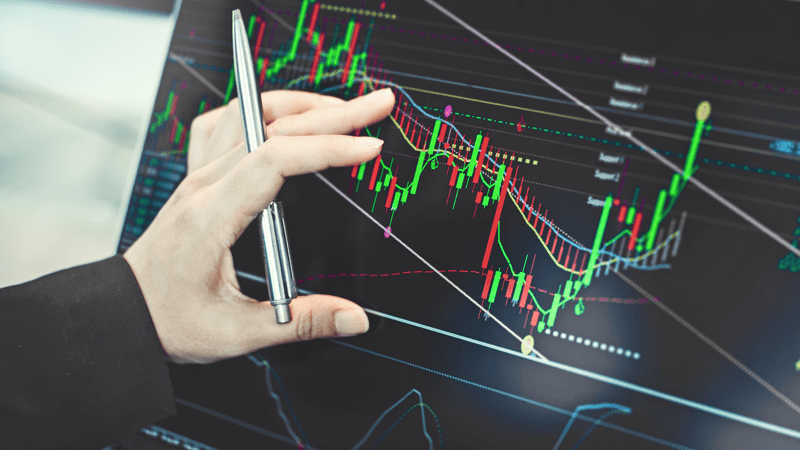Some say that you can attribute more than 80% of Forex market movements to algorithmic trading robots. These market activities are machine-based – and with the continuous advancement in technology – are increasingly becoming popular nowadays to both seasoned and beginner traders. Many Forex traders also call this black-box trading or algo trading. In simpler terms, a computer program helps you in your trades, like when to buy or sell, by following a set of rules in the formulation of its decisions or suggestions.
Algorithmic trading uses lines of codes to get detailed instructions for the trader, including tools such as volatility analysis, chart analysis, price arbitrage analysis, or trends analysis in the movement of prices. What makes algorithmic trading extremely attractive is its capacity to remove common human errors. With algorithmic trading, traders limit the chance of making decisions based on emotions. This is why institutions such as investment banks and hedge funds spend significant amounts of money building algorithmic trading models and getting a competitive edge.
Another advantage offered by algorithmic trading is the ability to trade for 24 hours on any given day, which is humanly difficult for some traders. As such, most users of this form are independent traders and large mutual funds. Algorithmic trading software like MetaTrader helps facilitate these kinds of trading.
What are the common algorithmic Forex strategies?
There are eight common strategies traders can use under algorithmic trading, which can yield varying results when used in combination:
1. Trend-following
The simplest strategy in algorithmic trading follows market trends and then incorporates a set of conditions based on technical indicators to execute buy or sell orders. The algorithm can also compare current data with historical data to predict the reversal or continuation of existing trends.
2. News-based
This strategy is simply looking at news channels to learn about events, activities or occurrences that may affect trading. One can generate what the industry calls “trade signals” depending on how the actual data compares to the market consensus or past data.
3. Mean reversion
This algo trading strategy is basic, as it merely assumes that markets are at 80% range of the time. It calculates an average price using historical information and makes trades based on an expectation that current prices will return to the average price.
4. Arbitrage
This occurs when forex prices vary across markets. When applied to algorithmic trading, the system simply looks for price imbalances and profits from these during the live trade. But since the differences are stated in micro pips, there is a need to trade large positions to gain significant profit amounts. Buying and selling occur rapidly, as arbitrage situations do not last long.
5. Market sentiment
The way a crowd views a specific currency defines market sentiment. If you buy a currency pair and many others follow suit, that can be taken as positive market sentiment or bullish. If traders are selling faster than they are buying, negative sentiment is present or bearish. In sentiment analysis, computer algorithms aggregate information from earnings reports, social media, news stories, and other sources. It uses all these inputs to determine the most favourable trading decision.
6. High-frequency trading
As its name suggests, this algorithmic system works at lightning-fast speeds, and it only takes milliseconds to generate buying and selling signals and to close trades. The strategy employs scalping or arbitrage to take advantage of quick price movements and high trading volumes.
7. Iceberging
Large financial institutions use this technique to keep their Forex trading positions a secret. They negotiate with different brokers, so trades get divided into smaller portions and executed based on assigned brokers. They then employ algorithms to allow smaller trade orders to be done at various times so other market participants won’t notice. This strategy protects trades against sudden price fluctuations. What retail traders see in the course of tracking large trade volumes is just the proverbial “tip of the iceberg.”
8. Stealth
The stealth technique is sneakier than iceberging. With the practice of iceberging, the stealth system introduced an algorithm designed to piece together smaller orders and who is behind them. This is the main objective of this strategy: to find out if a bigger player is behind small orders and trade accordingly with the information it uncovers.
If you’re looking for strategies to help you profit consistently in the Forex market, these algorithmic trading techniques are worth trying. What you can do manually, you can do better and more efficiently when you utilise computer programs.
Your broker can assist you more if you are interested in giving automated trading a try. Just remember that in the end, the choice is still in your hands as a trader.
Disclaimer: All material published on our website is intended for informational purposes only and should not be considered personal advice or recommendation. As margin FX/CFDs are highly leveraged products, your gains and losses are magnified, and you could lose substantially more than your initial deposit. Investing in margin FX/CFDs does not give you any entitlements or rights to the underlying assets (e.g. the right to receive dividend payments). CFDs carry a high risk of investment loss.




